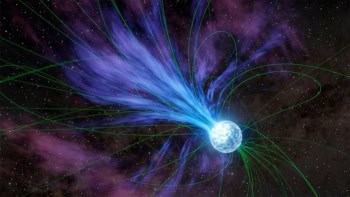Most stable nuclei are spherical, and they remain spherical when the nucleus is excited into rotational energy levels. However, when some nuclei are excited they deform into either a cigar-like (prolate) or a disk-like (oblate) shape. Now a team of nuclear physicists from Europe has observed a nucleus in which the three lowest energy states all have different shapes -- spherical, prolate and oblate (A N Andreyev et al. 2000 Nature 405 430).
Mark Huyse from the University of Leuven in Belgium and co-workers in Germany, Slovakia, the UK, Finland, Russia, Sweden and Belgium studied lead-186, which contains 82 protons and 104 neutrons. 82 is a “magic number” in nuclear physics, which confers special properties on nuclei with this number of neutrons or protons. Moreover, 104 is mid-way between 82 and the next highest magic number, 126, which should make this isotope of lead particularly special. Theory predicts that the first excited state in lead-186 will have an oblate shape in which two protons are promoted to higher energy levels within the nucleus, leaving two “holes” behind. The next highest state should be a prolate shape in which four protons have been promoted.
To create the lead-186 nuclei, Huyse and co-workers collided chromium-52 ions with a target containing neodymium-142. This created polonium-190 nuclei which then decayed by alpha-particle emission to create lead-186 nuclei. The Separator for Heavy Ion Production (SHIP) at the GSI laboratory in Darmstadt, Germany, was used to separate the 300 polonium nuclei produced every hour from the much higher background. By measuring the energies of the alpha particles – along with the energies of the electrons and X-ray photons emitted at the same time – the team was able to confirm the three different shapes of the lead nucleus.
Experiments like this should allow nuclear physicists to refine their models of the nucleus. One of the biggest challenges in theoretical nuclear physics is that heavy nuclei contain too many nucleons (over 100) for microscopic approaches to work, but too few for statistical approaches to be valid.



